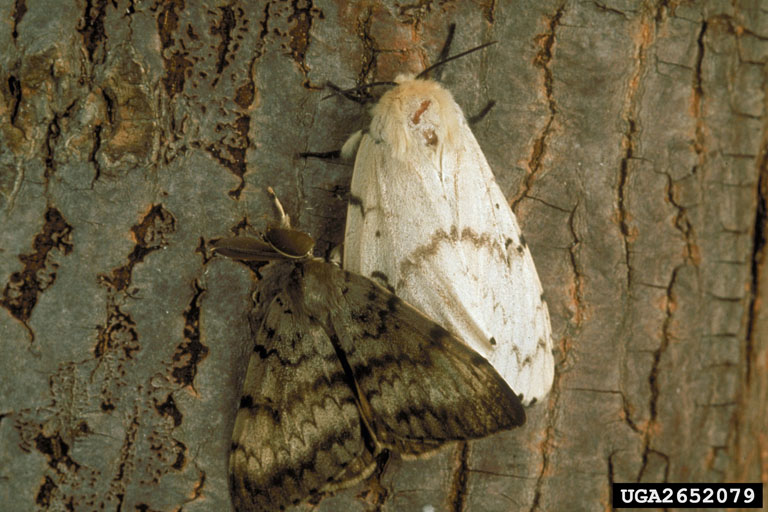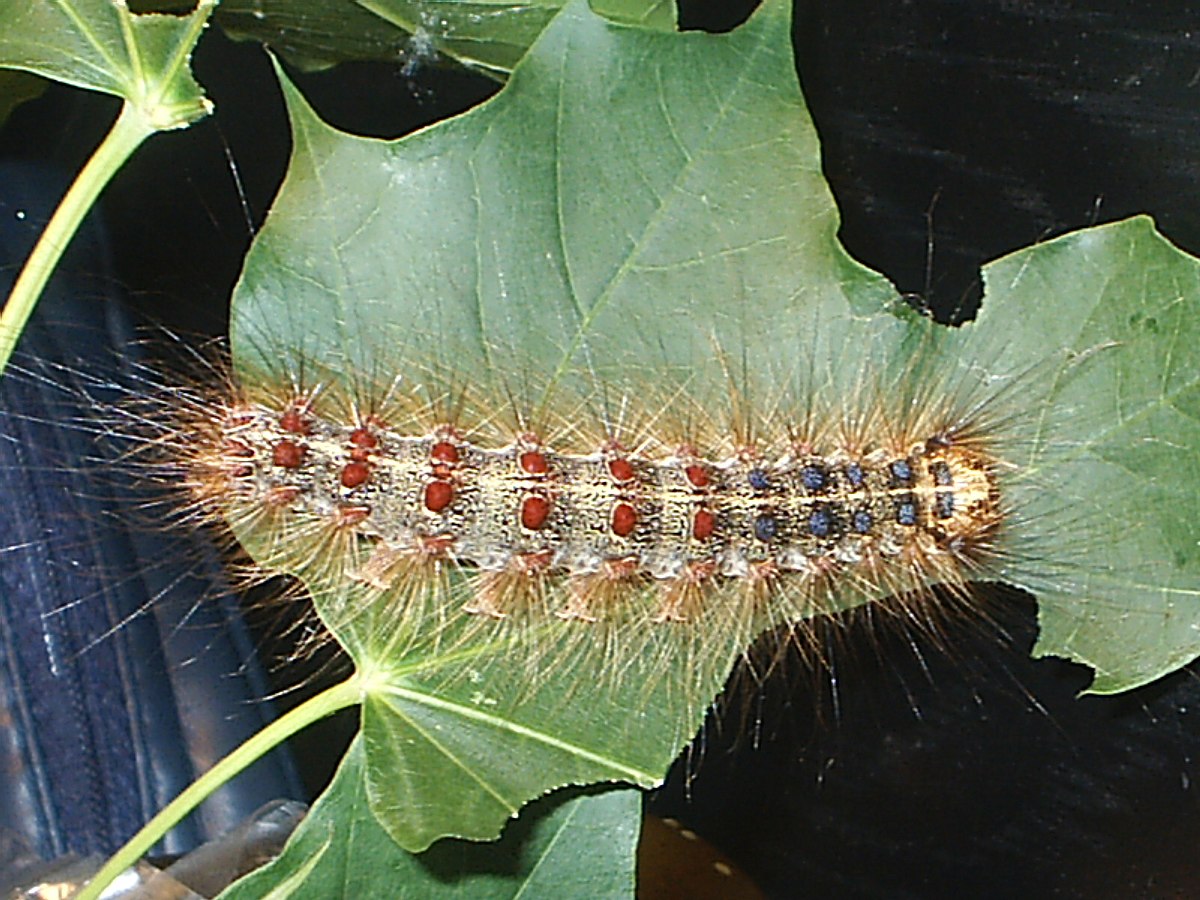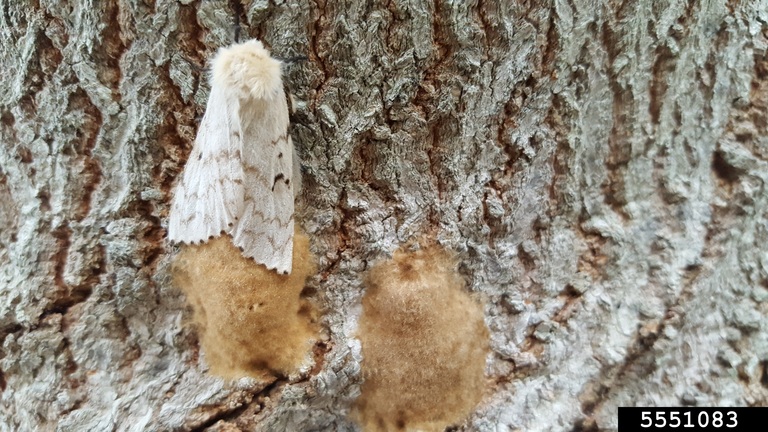Spongy Moth

Spongy Moth
(Lymantria dispar)
Tags: Terrestrial | EDRR
Identification and Reproduction
Spongy moth was formerly known as European Gypsy Moth.
Identification:
Moth:
- Adult moths will appear in late July and August.
- Female moths are larger than males with a 5 cm wing span (nearly twice the width of males) but cannot fly.
- Female moths are white with dark zig-zag patterned wings.
- Males are greyish brown, feathery antennae and can fly.
Pupae:
- Pupae stage occurs after catepillars are finished feeding and ready to transform to an adult, between June and July.
- They will cocoon near bark crevices and other sheltered locations.
- Pupae are dark reddish-brown, covered in yellow hairs.
Caterpillar:
- Young larvae are black or brown and only 6 mm long.
- In their next stage they are 5-6 cm long, dark grey with 5 pairs of blue dots and 6 pairs of bright red dots along the back.
- They also have long hairs in their later stages.
Egg:
- Spongy moths hibernate in egg masses that are covered in tan hairs, appearing fuzzy and cloth-like.
- Eggs are found collectively as an egg mass, which are 4 cm long, tan coloured and laid near tree trunks, bark, outdoor furniture and even sides of buildings.
- Egg masses are approximately the size of a loonie and are made up of 100-1,000 eggs.
Reproduction:
- Eggs are laid in August and September and hatch in the spring.
Habitat & Ecology
- Host tree species include oak, birch, poplar, willow and maple species, totalling to approximately 500 different tree species.
- Infestation sizes will fluctuate annually based on local conditions.
- As adults they have a short lifespan; males only survive a week and females die after laying eggs. Adult moths also do not eat.
- Egg masses can travel on vehicles, tents, trailers and other camping equipment.
- Larvae can be distributed via wind.
Impacts
- At outbreak levels, nearly all broadleaf trees in the region will be defoliated, many catepillars on site and frass will be seen on trees.
- The Asian gypsy moth poses as a greater threat as it prefers evergreen species, putting conifer forests at risk.
- They cause damage to plants, causing growth loss, stunted growth and stem deformaties.
- Defoliation can lead to eventual death of the trees and entire parts of forests.
- When feeding on oak trees, it can can be devastating to forests and wildlife that depend on acorns for food supply.
- In BC, the spongy moth is a major threat to fruit producers, especially cherry and apple trees and they can even feed on berry shrubs.
- They have high economic impacts on several BC industries; agriculture, lumber and plant nurseries.
- Caterpillar hairs can cause skin rashes and respiratory problems.
Management
Prevention and monitoring:
- Contact the Canadian Food Inspection Agency (CFIA) if you find spongy moths and an inspector will investigate.
- Egg masses should be removed from late fall through spring, prior to eggs hatching. If egg masses are found near buildings or in furniture, soak mass in a soapy (or bleach) hot water mixture. Check fence posts, firewood supply, swing sets, trailers and lawn furniture as insects use these areas for protection from the sun.
- Check camping equipment for egg masses before leaving site.
- Do not move firewood. Burn firewood where you buy it.
- Large scale, mass trapping is used as a monitoring and a treatment measure. Pheromone traps are placed around infested areas and intend to trap males before mating with females.
- Specialized traps and survey methods are used annually in BC to detect and monitor spongy moths and determine if populations can be eradicated.
Biological Control:
- A bacteria, Bacillus thuringiensis kurstaki (Btk), is used as an insecticide that releases a crystal protein that is lethal to lepidopteran larvae. The toxin attacks and paralyzes the gut and forces the catepillar to stop feeding. Btk has very little impact on non-target species and is not toxic to humans.
- A small wasp in the Encyrtidae family, is a parasite of the spongy moth egg.
Resources
For more information on control measures on spongy moths refer to the Health Canada pest control data page on Gypsy moths.
Refer to the CFIA's fact sheet on the Lymantria dispar (spongy moth), for more help identifying the moths and signs and symptoms of infestations.
To prevent the spread of the Asian spongy moth please refer to the CFIA fact sheet here.
Forest Invasives also offers a good resource on identification of the European Spongy Moth and management strategies that have been used to control them.
Header photo (Jerzy Strzelecki).






